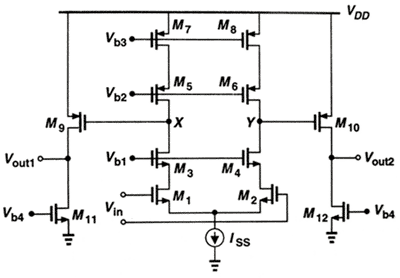yonzzan
Junior Member level 3

Added after 4 minutes:
On the first one, NMOS is connected to 1st stage while PMOS is connected to 1st stage in the second one. How does the change effect to this circuits?
Follow along with the video below to see how to install our site as a web app on your home screen.
Note: This feature may not be available in some browsers.
